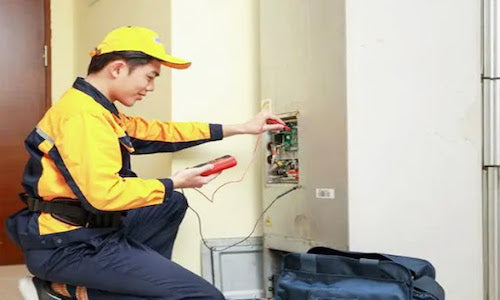Refrigerators are essential appliances running year-round, making them prone to wear and tear. While professional repairs are often the go-to solution, many common refrigerator issues can be resolved at home with some patience and basic knowledge. This guide provides a step-by-step approach to identifying and fixing frequent refrigerator problems, covering cooling issues, noise problems, condenser checks, and more. Save time and money by learning how to handle these repairs by yourself.
Common Refrigerator Issues and DIY Fixes
1. Heat Around the Refrigerator Door
- Cause: To prevent condensation when the refrigerator is cold, manufacturers design the compressor's hot air to circulate around the door seals, reducing moisture buildup.
- Fix: This is normal and requires no repair unless the seals are damaged.
2. Noisy Refrigerator Troubleshooting
Noise from your refrigerator can raise from various components. Here's how to identify and fix the issue:
-
External Factors:
- Ensure the refrigerator is level. Adjust the feet using a wrench if necessary.
- Move the refrigerator away from walls or other objects to prevent vibrations.
- Tighten loose condenser coils or evaporator trays.
-
Fan Noise:
- Check for deformed or misaligned fan blades. Replace or adjust as needed.
- Ensure the fan is securely mounted to reduce vibrations.
-
Compressor Noise:
- Inspect for loose components near the compressor.
- Replace old or damaged vibration pads.
- If the compressor itself is noisy, it may need replacement.
-
Electromagnetic Valve Noise:
- Add vibration pads. If the noise persists, replace the valve.
- For irregular humming, inspect the power board for faults.
-
System Noise:
- Hissing sounds may indicate trapped air. Flush the system and check the pipes.
- Gurgling noises often point to refrigerant issues.
3. Refrigerator Not Cooling
If your refrigerator isn't cooling properly, try these steps:
-
Check Temperature Zones:
- Ensure all compartments are turned on and displaying the correct temperature.
-
Inspect Sensors:
- Faulty sensors can cause cooling failures. Test the parameters and replace if necessary.
-
Clogged Capillary Tubes:
- If the refrigerator cools unevenly, clean or replace the capillary tubes.
-
Compressor Issues:
- Check refrigerant levels. If none is present, inspect for leaks and refill.
4. Poor Cooling Efficiency
If your refrigerator cools but not effectively, follow these troubleshooting steps:
-
Room Temperature:
- For environments below 16°C (60°F), activate the low-temperature compensation switch.
-
Food Placement:
- Avoid overloading shelves, especially in chest freezers.
-
Defrosting:
- A thick layer of frost can hinder cooling. Manually defrost the refrigerator if necessary.
-
Door Seal:
- Inspect for gaps and replace damaged seals.
-
Component Malfunctions:
- Test heating wires, thermostats, and control boards for faults.
5. Refrigerator Runs Continuously
If your refrigerator runs non-stop, it could indicate:
-
Incorrect Thermostat Setting:
- Set the thermostat to an appropriate level (e.g., below 3 in summer).
-
Frost Build-Up:
- Excess frost can cause inefficiency. Regularly defrost the unit.
-
Placement Issues:
- Ensure the refrigerator isn't exposed to direct sunlight and maintains at least 10 cm (4 inches) of clearance from walls.
-
Temperature Sensor Problems:
- Inspect sensors controlling temperature regulation and replace them if faulty.
Maintenance Tips for Long-Term Refrigerator Performance
- Clean the Condenser Coils Regularly: Dust can accumulate and hinder cooling efficiency.
- Inspect Seals: Tight seals prevent cold air from escaping. Replace damaged seals promptly.
- Avoid Overloading: Overloading blocks air circulation and reduces cooling efficiency.
- Regular Defrosting: If your refrigerator isn’t frost-free, defrost it periodically to ensure optimal performance.
- Monitor Noise Levels: Address unusual noises early to avoid more significant issues.
When to Call a Professional
While many issues can be fixed at home, certain problems like refrigerant leaks, internal electrical faults, or significant compressor damage require professional attention. Keep these repair costs (vary on location, time and human cost) in mind:
- Refrigerant Refill: $50–$150
- Compressor Replacement: $300–$500
- Sensor Repair: $75–$200
Conclusion
Regular maintenance and basic troubleshooting can significantly extend refrigerator's lifespan and save on repair costs. Whether you are dealing with noisy components, cooling inefficiencies, or door seal issues, this guide can assist you to identify and resolve common problems. For more complex issues, don’t hesitate to seek professional help.
Keep your refrigerator running smoothly and efficiently with these tips!




